Fuga Perpetua – Yuval Avital
Fuga Perpetua – musical terms meaning ‘always running’ – is a total artwork, combining virtuosic music for ensemble, a dynamic surround-sound installation in constant motion, video projections and a ‘vocal crowd’. The leading storytellers of the work are refugees in Kenya, Israel, Italy and the UK, narrating beyond words, through our senses of hearing and sight, intuition and imagination.
Performed by Ensemble Meitar: Amit Dolberg – Piano, artistic direction; Yoni Gotlibovitch – Cello; Moshe Aharonov – Viola; Gilad Harel – Bass clarinet; Hagar Shahal – Flutes.
Sound direction and ‘Mobile Sound Theater’ developer – Tychonas Michalidi
Video post production and light – Michele Innocente
Scientific advisor – Gerald C. Cupchik, University of Toronto
Additional filming in Kenya – Andrea Trivero
Coordination filming in Kenya – Qaabata Boru
Additional filming in Israel – Yoel Culiner (refugees interviews) and Yoav Ruda (Hasimta Athletics runners)
Coordination of interviews in Israel – Ensemble Meitar
Additional video and audio contributions by UNHCR
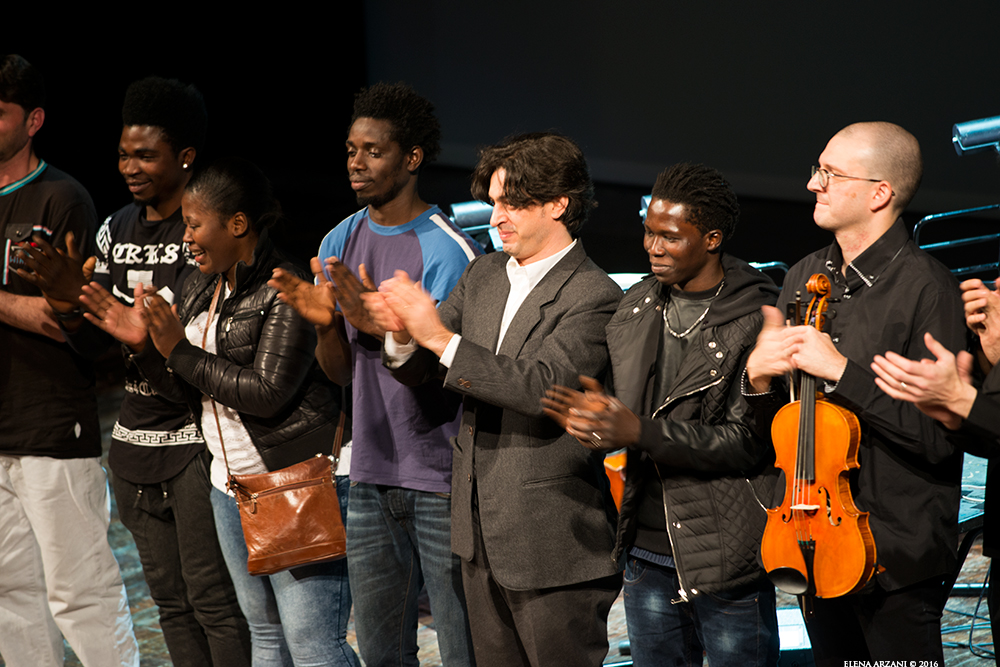
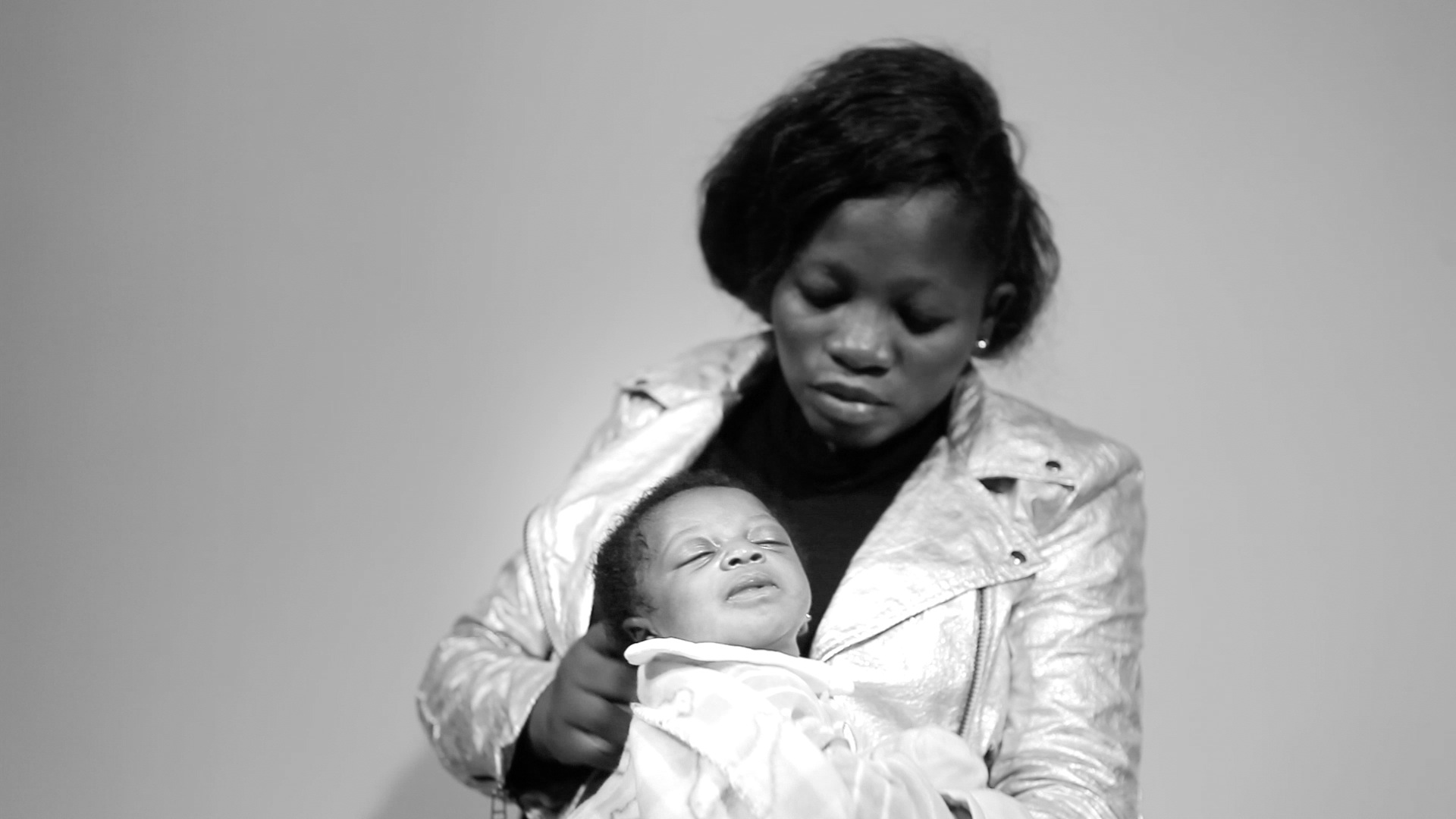
Introduction
The more we read and hear about refugees, it seems we understand and relate to their experience less. They become representations of something other-than-us, reduced to a familiar script of our worst fears. Responding to one of the greatest dramas of our time, Yuval Avital and Meitar Ensemble smuggle us across the border between our concepts of ‘us’ and ‘them’.
‘Home’ is the root of our identity, our magnetic north, our fixed point from which we orient our story, a sanctuary of protection and intimacy. Without a home, we become vulnerable, unstable, disoriented, lost. Our experience of music is also defined around ideas of home, of stability and rest, but also of movement, change and transformation. In Fuga Perpetua, a rest in one artistic layer drives movement in another, in counterpoint, interweaving constantly.
The ‘storytellers’ in Fuga Perpetua are refugees, appearing in the work through projected ‘interviews’ conducted by Avital and collaborators, where individual refugees were asked to relive before the camera significant moments and memories of their lives, both silently and in voice, following a process designed for this project by Avital with the guidance of Prof. Gerald Cupchik (University of Toronto), a specialist in emotions and aesthetic experience.
The video also includes footage specially made for the opera by Andrea Trivero, director of the ‘Pace e Futuro’ NGO, in the refugee camp of Kakuma in Kenya on its border with South Sudan, with the help of Qaabata Boru chief editor of Kakuma News Reflector. Other footage includes film taken by Meitar Ensemble together with ‘Hasimta Athletics’ – an NGO based in Tel Aviv which aims to empower refugees by meaningful athletic activity, mainly running.
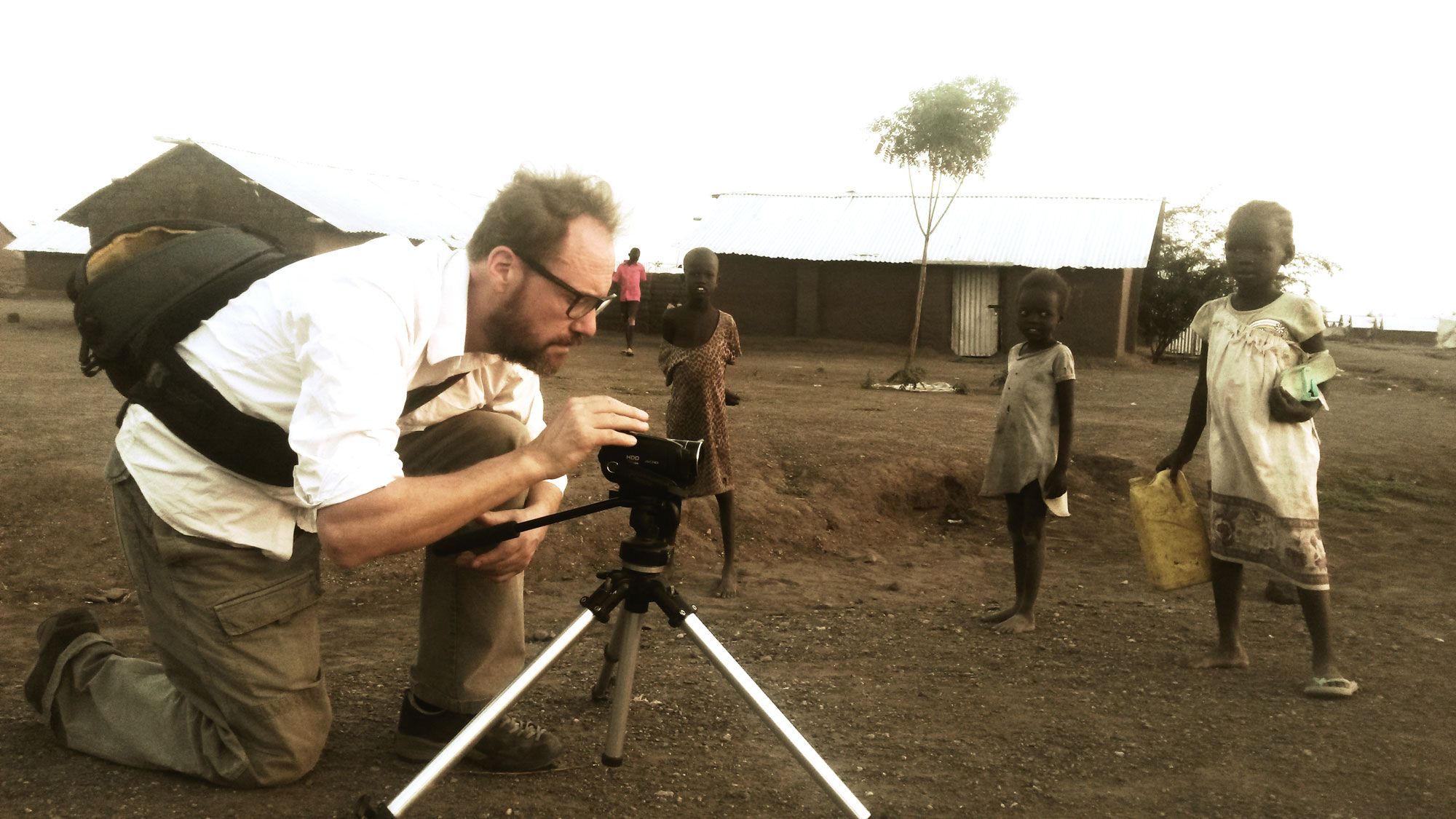
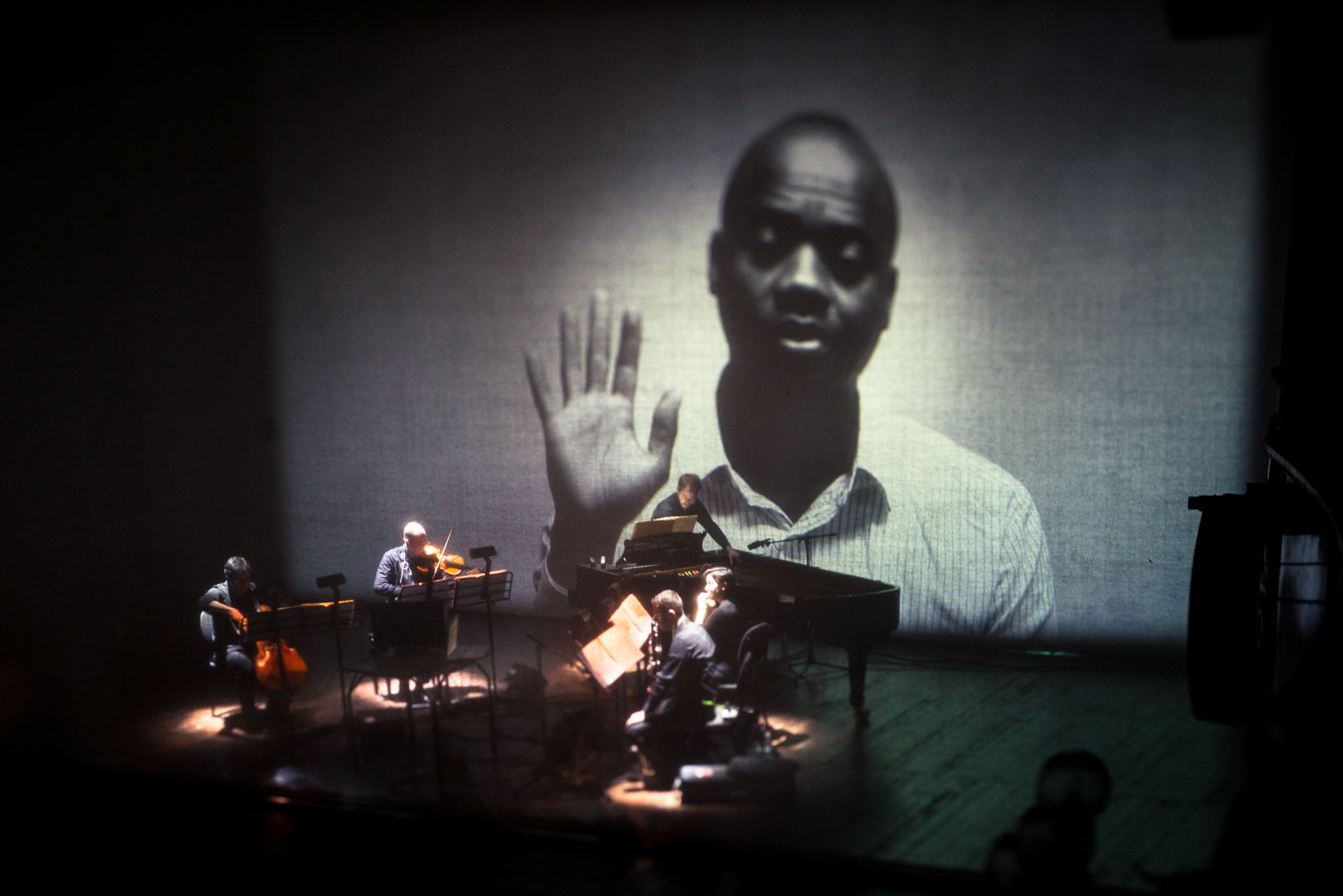
We are particularly grateful for the support of the video multimedia unit of the UNHCR, which provided numerous audio recordings of interviews of refugees conducted worldwide, as sound and visual recording of refugee camps, refugee boats and travels.
Some performances of Fuga Perpetua will feature local hosted refugees who will join the performance through movement, sound and gesture, developing elements first prepared in Avital’s Rivers, which was performed in September 2015 with a vocal crowd of refugees at the inauguration ceremony of the Third Paradise Centre by Michelangelo Pistoletto in Biella, Italy.
Finally, the sound installation, a ‘Mobile Sound Theatre’, is devised by Yuval Avital and developed by Dr.Tychonas Michailidis (Birmingham Conservatoire). Comprising 25 mobile loudspeakers surrounding, between and underneath the audience, this gives a powerful physical presence to the spatialisation of sound in which events appear, move, take on shape and character.
Yuval Avital: Composer, multimedia artist and classical and electric guitar player, Yuval Avital was born in Jerusalem (1977) and now lives in Milan. His works range from huge sonic events for numerous performers to orchestral and chamber compositions, from icon-sonic operas which include classical performers, multimedia tools together with traditional carriers of ancient cultures, to highly technological projects, involving scientists, artificial intelligence and live sonic elaborations. His art expand to sound installations, video and performance, also in collaboration with some the greatest artists, performers, directors and designers of our time.
His works have been presented in festivals such as Warsaw Autumn (Poland), RomaEuropa, Mito SettembreMusica, Tempo Reale, Cantiere Internazionale d’Arte, Montepulciano (Italy), Tunog-Tugan (Philippines), 360° (Germany), the Jerusalem Multimedia Festival (Israel), Miami Art Basel (USA), and Central-Asia contemporary music days (Kazakhstan), as well as in France, Spain and Brazil.
His installations include: a large-scale multimedia transformation of an entire train station (Ostienze) during the Notte Bianca di Roma (Rome, 2007); a sonic and movement score for 16 dancers (Packman vs. Escher, Biella 2006-2007); an interactive dance-video-sound installation for two dancers (Fondazione Pomodoro, Milan, 2010); a sound installation recomposing itself with AI system (Bergamo 2012); the largest sound installation ever done in Italy (Alma Mater 2015); an invasion of nature sounds to the city (Fields, Bergamo 2015); and Rivers – sonic performance for a vocal crowd of refugees & loudspeakers (Opening of theThird Paradise center by Michelangelo Pistoletto, Biella, Italy 2015).
Among his works standout: Alma Mater, a 1200 sqm icon-sonic installation for 140 loudspeakers, legendary étoile of La Scala, visuals and lace makers (Milan 2015); REKA for 6 extended traditional singers, 2 percussions & a crowd of hundreds of voices (Warsaw Autumn Festival 2014); KARAGATAN for 100 traditional gong & bamboo musicians and 2 conductors (Philippines 2013); OTOT icon/sonic symphony (opening of the symphonic season of Theater of Como, 2013 Italy); Unfolding space, concert & sound installation, created in collaboration with NASA & ESA scientists (Italy 2012); GARON for 45 tubas, 6 percussions, 3 conductors, choir & live electronics (Closing event of Dirty Corner by Anish Kapoor, Milan, Italy 2012); Mise en abîme for a crowd of 100 persons, 34 accordions, ensemble & 4 conductors (Italy 2011); and four operas commissioned by leading Italian festivals (2008, 2010, 2011), as well as numerous chamber music compositions performed by leading soloists.
His works and concerts have been broadcast on Sky Classica (which had dedicated to him a documentary film), Radio France (France Musique), Radio 3 suite (Italy), WQXR & Classical Guitar live (USA), CCTV China, and Kol Ha Musica (Israel), among others.
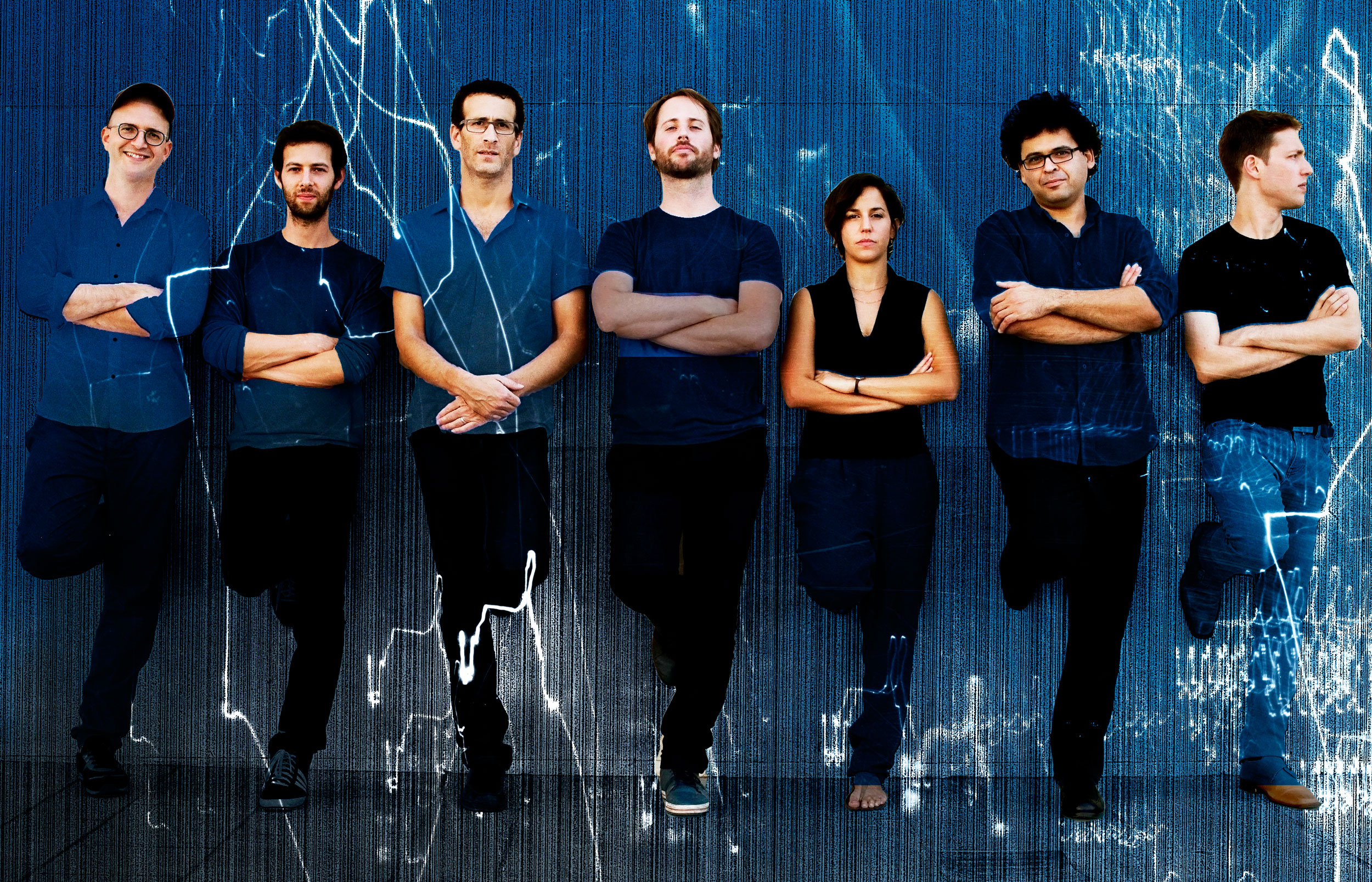
Meitar Ensemble: Praised by the New York Times for their “excellence, poise and precision,” the Meitar Ensemble, founded in 2004 by artistic director Amit Dolberg, has established itself as a prominent array of virtuosos specialising in contemporary music.
Based in Tel-Aviv, they have been featured at some of the most prestigious venues worldwide, including the Centre Pompidou (Paris), the Purcell Room (London), the Radial System and BKA (Berlin), the Moscow Conservatory, Yale University, the ‘Nuovi Spazi Musicali’ Festival in Rome, the Heidelberg Biennale for Contemporary Music, Sound Ways festival St. Petersburg, and more.
They have held residencies at MATA festival (NY), Dartmouth University, and the Zeitkunst Festival in Berlin, and are ensemble in residence at the Israeli Conservatory, Tel Aviv.
Over the past ten years they have commissioned and premiered over 200 new works. They regularly collaborate with renowned composers including Fabian Panisello, Mark Andre, Walter Zimmermann, Philippe Leroux (composer in residence), Matthias Pintscher, Daniel Peter Biro, Ivan Fedele, Chaya Czernowin, Vladimir Tarnopolsky, Giya Kancheli and many Israeli leading composers.
The fruits of many of these partnerships can be heard on the Spanish recording label VERSO, the American label Albany, the Israeli Music Institute label and more.
They have been acclaimed for their significant contribution to the development of Israeli culture and music, receiving the Binyaminy Award (2006), Partosh Award (2008), and the Landau Award (2010). Winners of the Silver Palm award for Best Documentary at the 2010 Mexico International Film Festival for their historical performance at the Wannsee Vila, “Am Grossen Wannsee – The Wannsee Recordings”, directed by Emre Amram Sonmez.
The Meitar Ensemble has initiated a unique educational youth program, the Tedarim Project, offering young musicians in all fields (performance, conducting and composing) an opportunity to learn, explore and perform new music at the highest level. In addition the ensemble has established a series of master courses for young professional composers and conductors, Contemporary Encounters, with musical figures such as Ivan Fedele, Philippe Leroux, Fabian Panisello, Pierre-Andre Valade and Michel Tabachnik.
Tychonas Michailidis is an electronic composer/performer born in Limassol, Cyprus. After studying jazz piano at the Netherlands he moved to Cambridge, UK to gain a Bachelor degree in music. There, he got involved with the art of composing with technology. After that, he moved to Birmingham for his Masters degree in Digital Arts in Performance. He recently completed his PhD at Birmingham Conservatoire.
His research interest lies in human-computer-interaction and the meaning of haptics when performing through sensor technology and real time sound transformation. In his sonic language he combines aspects of contemporary music with transformed digital means. A tendency towards simplicity of musical expression is balanced by elaborate coloursnof sound. He performs regularly in Greece, Cyprus and in the UK.
In 2009 he formed a duo group with the contrabass player Sebastiano Dessanay where they perform original compositions and improvisations using various sensor technologies. He is also active in tape composition where he looks at sonic possibilities of recorded and constructed sounds. In 2006 his piece Lady De was included in the compilation Works 06 by Ampublishing.org. He is a member of the (HELMCA) Hellenic Electroacoustic Music Composers Association in Greece. Additionally, he is supporting the Integra project, a European program led by Birmingham Conservatoire, on technical, musical, and software issues. He is the technical adviser of the Avaton Music Festival.
Based in Biella (Italy), Andrea Trivero graduated from Turin Polytechnic with an experimental thesis about building materials in developing countries. From 1998 to 2002 he lived with his family in Africa (Burkina Faso) to work on projects about refugees and rural development, becoming infrastructure manager of the most important Italian Cooperation Project of that time, ‘Projet de mise en valeur de la Vallée de la Nouhau’. During the same period he collaborated with many international NGOs.
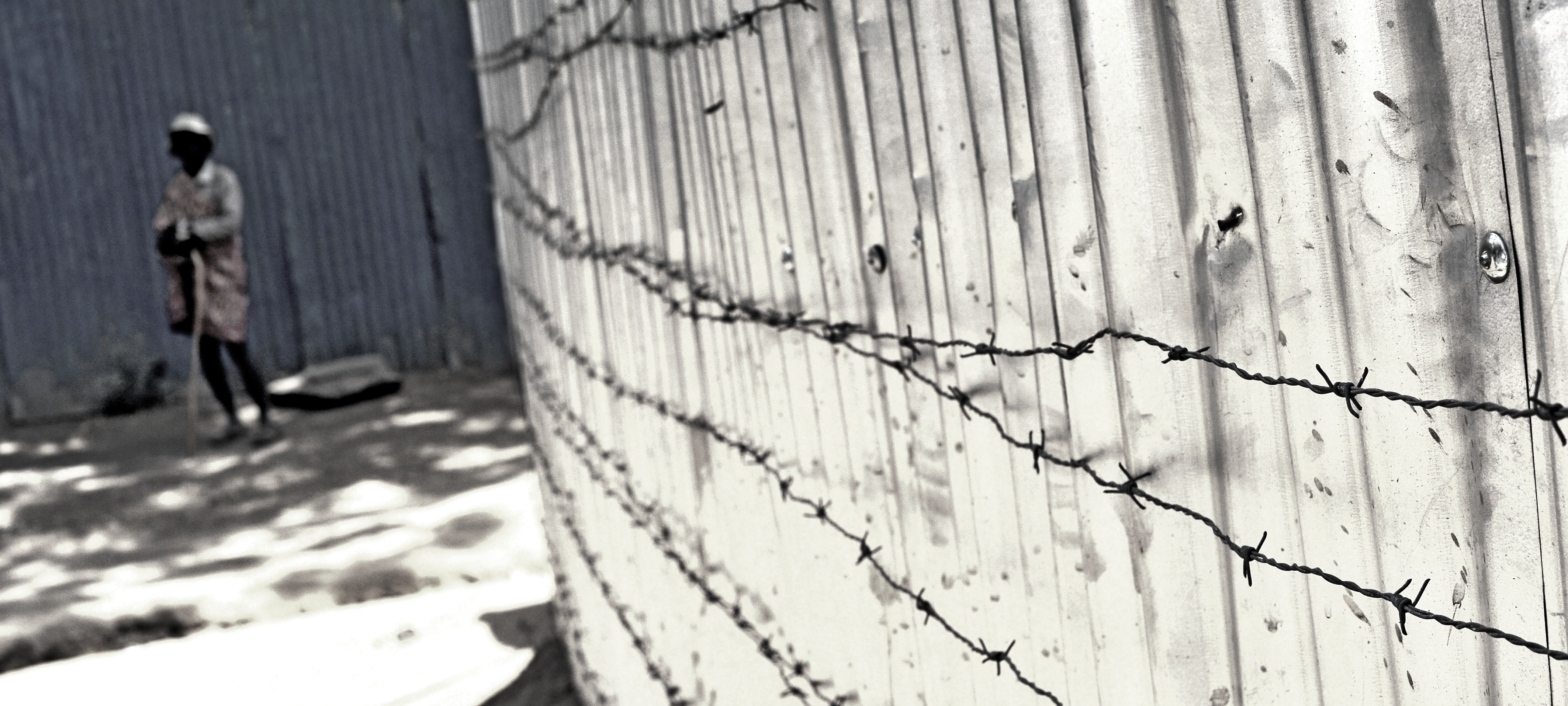
Since 2002 on he has focused on personal research about human conditions in African society, making photo reports and shooting video documentaries. In 2003 he published his first photo book: “Water is Life” (Coes Editions, 2003) about relationships between human beings and water in Enerdief, a little Tuareg campement in the northern Mali, Sahara desert.
In 2004, together with African migrants, he travelled across the main route that leads Africa to Europe, crossing the Sahara desert from Mopti to Djenne, Timbuktu, Gao, Niamey, Agadez, Tamanrasset and arriving to Djanet oasis, obliged passage to reach Libya. In 2010 he crossed, alone and with makeshift means, the most imposing African forest, from Gabon to the Democratic Republic of Congo, leaving from Lambarenè, where the doctor Albert Schweitzer lived and worked (who received the Nobel Peace Prize in 1952) and arriving to Kimbau, in the Bundundo province (RDC), where doctor Chiara Castellani works, following the track of the Italian-French explorer Pietro Savorgnan de Brazà (4.000 km). From this experience was born the documentary Un giorno a Kimbau.
From 2006 he has coordinated the Italian NGO ‘Pacefuturo’ onlus, that numbers among its founding members the artist Michelangelo Pistoletto and father Bianchi from Bose Monastery. From 2014 he’s also in charge of the Applicants for International Protection Welcome Centre of Villa Piazzo and Villa Pasini in Pettinengo (Italy) which hosts more than 50 refugees from all over the world.
Professor of psychology at the University of Toronto, Scarborough, Gerald C Cupchik has spent 40 years exploring the search for meaning and experiences of feelings and emotions in everyday and aesthetic episodes. Topics of special interest have included: non-verbal communication of emotion; creation and reception of art and poetry; appreciation of metaphor; and the experience of industrial design objects.
From a methodological viewpoint, an important goal has been the integration of quantitative and qualitative forms of data collection in order to achieve a more comprehensive understanding of the phenomenon under study. To this end, he examines responses to paintings, literature, films, design products, television commercials, visual metaphors, and so on. This requires a multidisciplinary approach whereby researchers bring experimental paradigms together and examine emotional and aesthetic processes as seen through them.
This approach encourages ongoing reflection, not just about the phenomena under investigation, but also about the very nature of method itself. As such, Dr. Cupchik sees great value in placing research in a historical context to appreciate the origin of underlying ideas.
Production: Magà Global Arts (Italy), Third Ear (UK) in co-production with Teatro Comunale “L. Pavarotti” Modena, Italy, Brighton Festival, Nottingham Lakeside Arts Centre
Commission: Ensemble Meitar & Third Ear
With the support of Arts Council England, Arts & Humanities Research Council in collaboration with Pacefuturo Onlus (Italy), Birmingham Conservatoire (UK), Midlands 3 Cities, Integra (UK), KANERE – Kakuma News Reflector (Kenya), Hasimta Athletics (Israel), Municipality of Milan department of social politics.


Special thanks to: Carlotta Sami & Barbara Molinario (UNHCR Italy), Edith Champagne & Médéric Droz-dit-Busset (UNHCR Video unit Geneva), Duke Mwancha (UNHCR Kenya), Dianne Skerritt, Rainbow Project, Diocese of Southwell and Nottingham.
